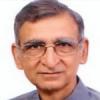Universities are an important place for shaping the mind and opinions of the future generations. A free open debate, intermingling of different opinions, castes, and religions shapes the students towards humane inclusive values. The academic work along with the idealism of youth adds up to the better perceptions of World and society. With new dispensation coming to power from last couple of years the matters are being influenced in a narrow direction by various means, one of which is preventing the debates, the other is a more alarming, to create pretexts to attack the liberal democratic tendencies within the campus. The matters which developed in Ramjas College (22nd February 2017 onwards) give an idea of the plan of right wing politics as far as atmosphere in Universities is concerned.

A two days seminar was organized, two of the speakers being Omar Khalid Shehla Rashid. On the pretext that they are anti national, the seminar was obstructed-stopped and students and teachers who were for holding the seminar were attacked on the ground of supporting anti national ideas. The attack was done by ABVP, the student wing of RSS. Next day they practically held the teachers and students as hostage, not permitting them to go to the police station to lodge the FIR. Two of the teachers were openly beaten by these students. Following this a Tiranga (tricolor flag) march, was taken out. And the day next a huge ‘DU bachao’ (Save Delhi university) march participated by thousands of students-teachers and supporting students from other colleges also took place. It did show the degree of resistance to tactics of ABVP.
The attack on the Ramjas College-Delhi University is the latest in the series of attacks orchestrated by ABVP in different campuses. In Hyderabad Central University, the attack was launched on the ground that Anti-National, castiest activities are going on in the campus. What were these activities which were dubbed as anti national? The Ambedkar Students Association (ASA) had organized the screening of the film Muzzafarnagar Baki hai, (A film on Muzzafarnagar violence), had called for abolition of death penalty as a form of punishment (Yaqub Memon) and had organized beef festival in solidarity with those who consume beef in the country, as they are under attack from the ‘Holy Cow’ squads. It is too well known as to how institutional murder of Rohith Vemula took place and that led to the massive response all over the country as along with University autonomy the issue was also related to dalit issues, attack on Ambedkarite ASA.
How anti-nationalism as a weapon is constructed becomes clear if we put JNU and DU together in a sequence. In JNU, to put the things chronologically, some masked men had come, shouted the slogans. Kanhaiya Kumar, Umar Khalid and their friends were arrested on the charges of sedition: anti-nationalism. The interesting point is that the CD which was shown repeatedly by a channel turned out to be a doctored CD and more interestingly while Kanhaiya Kumar and company were arrested, the masked men were not! The court gave bail to Kanhiaya Kumar, Umar Kahlid. Recently Mr. Arvind Kejriwal has accused that BJP-ABVP people themselves shout slogans and then flee.
Despite that; all the BJP spokespersons top down picked up that JNU, students were shouting ‘Bharat Ki barbadi’ (Destruction of India) type slogans. The point is despite a lapse of one year investigation is not clear; there are lots of holes in the story, raising lots of questions. In Ramjas College case also the name of Umar Khalid is being repeatedly thrown up. Umar Khalid has an opinion on Kashmir etc. which may not match with the opinion of those attacking him. The point is in the discussion and debate, should we bypass people with opinions different from ours’. More so when ABVP’s brother organization BJP is having a coalition Government with PDP in Kashmir and PDP has been soft to separatists at times. Clearly it seemed that BJP on one hand, as per RSS agenda wants to communalize the educational campuses and on the other intimidate those whose opinions are different from Hindu nationalist ideology.
The assertiveness of ABVP in indifferent campuses has gone up with the Modi Sarkar coming to power. Their indulgence in violence is due to the confidence that they can get away with whatever they do as they have mentors who are in the seat of power. This has given their aggression a boost like never before. One after the other colleges and universities are being targeted in the agenda of sectarianism. The case of Jai Narayan Vyas University (Jodhpur) is also a fairly recent one. One Prof Ranawat invited Prof Nivedita Menon of JNU for a talk. After the talk a complaint has been filed against the speaker and the organizer Prof Ranawat has been suspended. The matters are very disturbing. So what are the hopes for future?
In the aftermath of Rohith Vemula’s death; the nationwide uprising of students; and the coming to fore as issues of dalits has shaken the youth. Even in Ramjas College-Delhi University episode, while the ABVP’s Tiranga march drew a lukewarm response the liberal, progressive student groups’ ‘DU bachao march’ (Save Delhi University) was massive. At the same time the disturbing part of the whole episode is the trolling of Ramjas Student Gurmehar Kaur. She wrote a face book post that she is not afraid of ABVP that she is for Peace etc. In response BJP leaders and celebrities came down heavily on her. This has further infuriated the students and now there is a clear cut opinion for open debate in the campus. While ABVP debates through violence, the need to debate in seminar rooms is what is being supported by large section of students. The ploy to raise the bogey of Anti Nationalism, and indulge in violence may not work and the attempt to save the culture of debate and discussion in seminar rooms cannot be browbeaten easily.






Comments
Add new comment